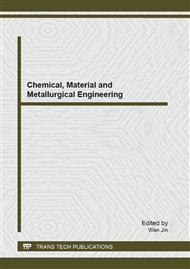p.137
p.142
p.147
p.155
p.161
p.167
p.173
p.179
p.186
Thermal Modeling Solid-Liquid Phase Change Materials (PCMs)
Abstract:
Three thermal modeling methods for phase change materials (PCMs): enthalpy-based method, effective heat capacity method and apparent heat capacity method, are presented in details. Their characteristics and application limitations are compared and discussed. We found that enthalpy-based method and effective heat capacity method are both approximation treatments, and can be well used in steady state problems, while apparent heat capacity method tracks the moving phase change boundary in PCMs, and it is the most accurate and applicable method of the three for dealing with transient processes. This work might provide useful information for the study of using PCMs in temperature control field, especially in aircraft environmental temperature control and thermal management.
Info:
Periodical:
Pages:
161-166
Citation:
Online since:
August 2013
Authors:
Keywords:
Price:
Сopyright:
© 2013 Trans Tech Publications Ltd. All Rights Reserved
Share:
Citation:


